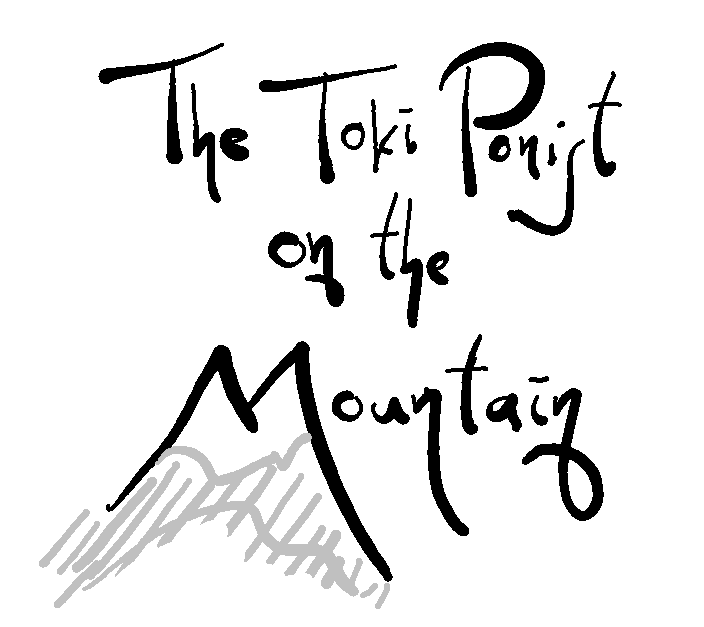lape li pona la, moli li monsuta tan seme?
lape pi pini ala li ike ala tawa sina lape.
If sleeping is nice, why is dying then so scary? Sleeping without end is not a problem for your sleeping self. — Toki Ponist Pu
July 2021
These are the words as recovered from the awoken well:
monsuta li alasa e ona.
jan Sipi li telo e mani soweli palisa waso ona.
jan Kasilon li toki wawa e ni:
sina wile moli la, sina wile awen tawa.
Here follows a relaxed translation:
Kasilon visits Tipi in his dreams. He is being chased by a monster. Tipi is washing his flying unicorn. Kasilon yells: “Help! It wants to kill me!” Tipi says: “If you want to wake up you must let it kill you. If you want to die, you must keep on running.”
Associative musings:
In magical thinking there is often a war between good and bad, the light and the dark, and between order and chaos. Especially the latter one is particularly interesting because the dystopian stories go either way. Some stories create a villain that desires to create total chaos and by doing destroys all forms of civilized life. The protagonist then tries to attain some kind of order again, which is often called balance as well. At the other end of the spectrum we have the totally ordered societies that function as a ruthless perfectly automated machinarium. These dystopias, often linked to fascist or at least dictatorial regimes, are combated by protagonists who show that the chaos of humanity is its strength.
And this makes sense, any robust system is a chaotic one. chaotic in the mathematical sense of being based on non-linear influences with results that fall within expected ranges but are impossible to predict precisely. A change in the complexity of the output is a indication of the health of the system. Take the heart rate. The timing between each beat is not exact. This heart rate variability is determined by a lot of factors that are hard to combine to predict the exact heart beat timing. When our body is really stressed by fear or just intens activity our heart starts to beat simpler, like a metronome. This may be more effective in the short term with respect to pumping around blood and oxygen. It also means that the heart is not responding to changes in the environment and makes it more susceptible to fail. On the other end of the spectrum a very complex and irregular heart rate signal loses its effectiveness as a pump for energy and also shows that the body can probably not respond well to outside influences as it should.
The discussion remains vivid in toki pona when complexity and bad are both described by ike and simplicity and good are both indicated with the word pona.
Read a newer koan (A knife does not need to cut itself. The self does not need to notice itself.)
Read an older koan (Only still water reflects the heavens perfectly. But all water reflects the heavens.)
